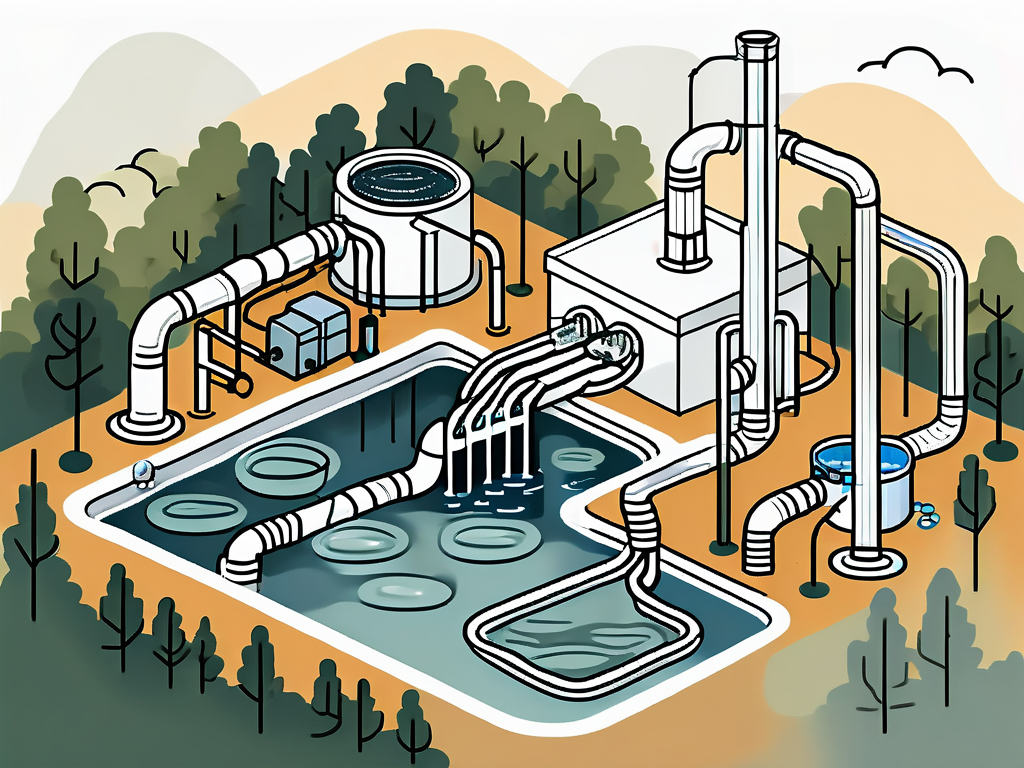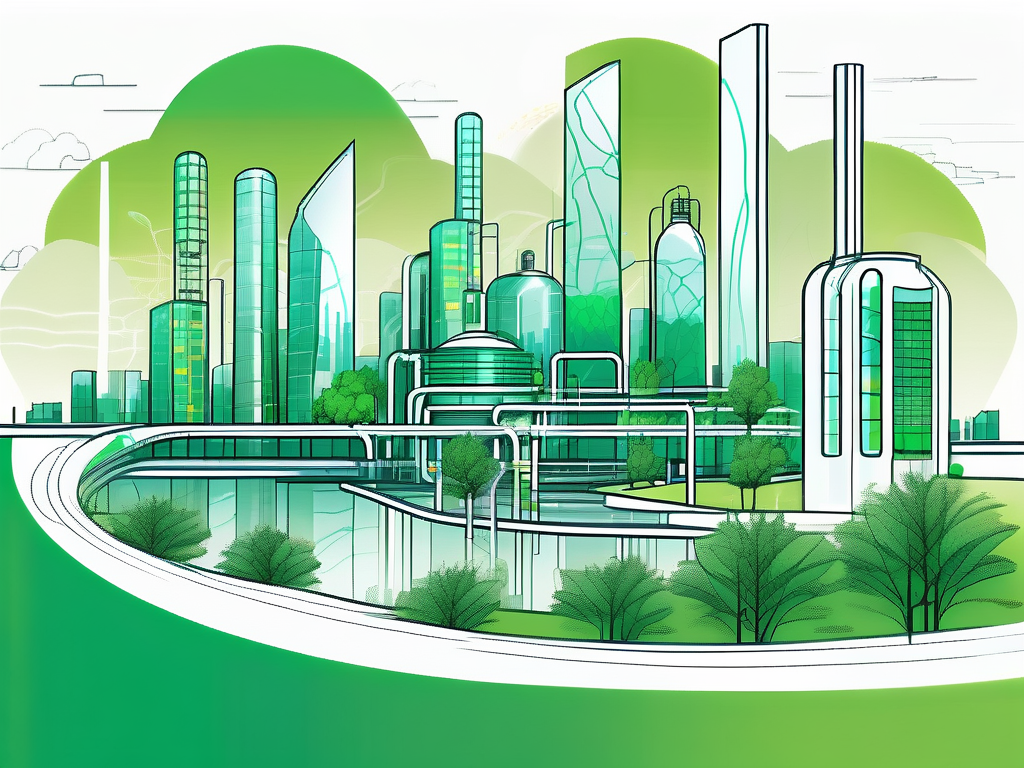
Green Infrastructure: Wastewater Treatment Explained
Wastewater treatment is a critical component of any comprehensive environmental management strategy. It involves the removal of contaminants from wastewater to produce an effluent that can be returned to the water cycle with minimal environmental impact. This article will delve into the intricate details of green infrastructure in wastewater treatment, providing a comprehensive understanding of the subject.
Green infrastructure refers to the use of natural systems, or engineered systems that mimic natural processes, to treat and manage wastewater. This approach provides numerous environmental, social, and economic benefits, and is increasingly being recognized as a vital tool for sustainable water management.
Concept of Green Infrastructure
The concept of green infrastructure in wastewater treatment is rooted in the idea of harnessing the power of nature to treat and manage wastewater. This involves using natural systems, such as wetlands, forests, and soil, to filter and treat wastewater, reducing the need for energy-intensive and costly traditional wastewater treatment processes.
Green infrastructure can be implemented at various scales, from individual buildings to entire cities, and can be used in both urban and rural settings. It provides a cost-effective and sustainable solution to wastewater treatment, with the added benefits of enhancing biodiversity, improving air and water quality, and providing recreational opportunities.
Types of Green Infrastructure
There are several types of green infrastructure used in wastewater treatment, each with its own unique characteristics and benefits. These include constructed wetlands, green roofs, rain gardens, permeable pavements, and bioswales.
Constructed wetlands, for example, are engineered systems that use natural processes involving wetland vegetation, soils, and their associated microbial assemblages to treat wastewater. They are particularly effective at removing pollutants such as nitrogen, phosphorus, and heavy metals from wastewater.
Benefits of Green Infrastructure
Green infrastructure provides numerous benefits beyond just wastewater treatment. It can enhance biodiversity by providing habitat for a variety of plant and animal species, improve air and water quality by filtering pollutants, reduce the urban heat island effect, and provide recreational opportunities for communities.
Moreover, green infrastructure can help mitigate the impacts of climate change by reducing greenhouse gas emissions associated with traditional wastewater treatment processes and by sequestering carbon in plant biomass and soils. It can also increase resilience to climate change impacts by reducing flood risks and improving water security.
Wastewater Treatment Processes
Wastewater treatment involves a series of processes to remove contaminants and produce an effluent that can be safely returned to the water cycle. These processes can be broadly categorized into preliminary, primary, secondary, and tertiary treatment.

Preliminary treatment involves the removal of large solids and grit that could damage or clog the treatment plant equipment. Primary treatment involves the removal of suspended and floating materials, while secondary treatment involves the biological treatment of wastewater to remove dissolved organic matter. Tertiary treatment involves the removal of nutrients and other remaining contaminants to produce a high-quality effluent.
Role of Green Infrastructure in Wastewater Treatment
Green infrastructure plays a crucial role in each of these treatment processes. For example, constructed wetlands can be used for primary, secondary, and tertiary treatment, effectively removing solids, organic matter, nutrients, and other contaminants from wastewater.
Green roofs and rain gardens can be used to manage stormwater, reducing the volume of wastewater that needs to be treated and preventing the overloading of wastewater treatment plants during heavy rainfall events. Permeable pavements and bioswales can be used to filter and treat runoff, removing pollutants and reducing the need for further treatment.
Challenges and Solutions
Despite the numerous benefits of green infrastructure, there are also challenges associated with its implementation. These include the need for land, potential for mosquito breeding, and the need for regular maintenance. However, these challenges can be addressed through careful design and management.
For example, the land requirement can be mitigated by integrating green infrastructure into existing urban landscapes, such as parks, roadsides, and rooftops. The potential for mosquito breeding can be managed by maintaining a healthy ecosystem with natural predators, and regular maintenance can be facilitated through community involvement and education.
Case Studies of Green Infrastructure in Wastewater Treatment
There are numerous examples of successful implementation of green infrastructure in wastewater treatment around the world. These case studies provide valuable insights into the practical application of green infrastructure and its potential benefits.
For example, the city of Philadelphia in the United States has implemented a comprehensive green infrastructure plan to manage its stormwater and reduce combined sewer overflows. The plan includes the use of green roofs, rain gardens, permeable pavements, and tree trenches to capture and treat stormwater.
Philadelphia's Green City, Clean Waters Program
The Green City, Clean Waters program in Philadelphia is a leading example of the use of green infrastructure in wastewater treatment. The program aims to reduce combined sewer overflows by 85% over a 25-year period by implementing green infrastructure throughout the city.
The program has been highly successful, with over 1,000 green infrastructure projects completed to date. These projects have not only improved the city's water quality but have also provided numerous co-benefits, including increased green space, improved air quality, and enhanced community well-being.
Constructed Wetlands in China
China has also made significant strides in the use of green infrastructure for wastewater treatment. The country has constructed thousands of wetlands to treat wastewater, with a particular focus on rural areas where traditional wastewater treatment facilities are lacking.
These constructed wetlands have proven to be highly effective at treating wastewater, with removal rates of up to 90% for biochemical oxygen demand, 70% for total nitrogen, and 60% for total phosphorus. They have also provided important habitat for wildlife and have helped to improve the aesthetic value of rural landscapes.
Future of Green Infrastructure in Wastewater Treatment
The future of green infrastructure in wastewater treatment looks promising. With increasing recognition of the environmental, social, and economic benefits of green infrastructure, and growing concerns about climate change and water security, the use of green infrastructure in wastewater treatment is expected to increase.

Advancements in technology and design are also expected to enhance the effectiveness and efficiency of green infrastructure. For example, the use of smart sensors and remote monitoring systems can help to optimize the performance of green infrastructure and reduce maintenance costs.
Role of Policy and Regulation
Policy and regulation will play a critical role in the future of green infrastructure in wastewater treatment. Governments around the world are increasingly recognizing the value of green infrastructure and are implementing policies and regulations to encourage its use.
For example, the European Union has developed a Green Infrastructure Strategy that promotes the use of green infrastructure in various sectors, including water management. Similarly, the United States Environmental Protection Agency has developed guidelines and resources to support the implementation of green infrastructure for stormwater management.
Research and Innovation
Research and innovation will also be key to the future of green infrastructure in wastewater treatment. There is a need for ongoing research to improve our understanding of the performance and benefits of different types of green infrastructure, and to develop innovative solutions to address the challenges associated with their implementation.
For example, research is currently being conducted on the use of biochar in constructed wetlands to enhance their ability to remove pollutants from wastewater. There is also ongoing research on the use of green infrastructure to recover resources from wastewater, such as nutrients and energy, providing a new paradigm for wastewater treatment.
Conclusion
Green infrastructure provides a sustainable and cost-effective solution to wastewater treatment, with numerous environmental, social, and economic benefits. With increasing recognition of these benefits, and growing concerns about climate change and water security, the use of green infrastructure in wastewater treatment is set to increase.
However, there are also challenges associated with the implementation of green infrastructure, and there is a need for ongoing research and innovation to address these challenges and enhance the effectiveness and efficiency of green infrastructure. With the right policies and regulations in place, and with continued advancements in technology and design, the future of green infrastructure in wastewater treatment looks promising.



